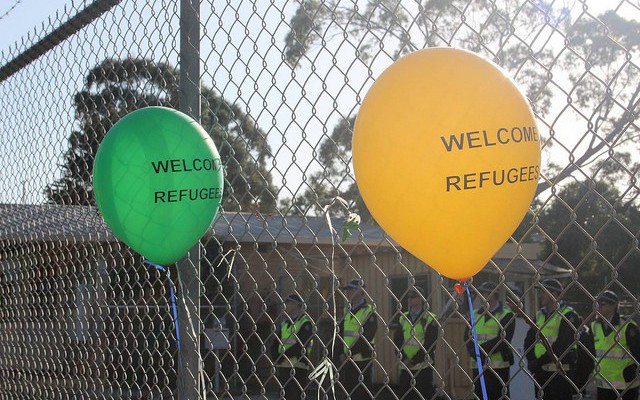History suggests refugees on Manus and Nauru can be resettled in Australia without reviving boat arrivals
Last month 54 refugees departed Manus Island for resettlement in the US under an agreement between the Turnbull and Obama administrations. Curiously, the government has not expressed concern that this will increase asylum seeker boat traffic from Indonesia to Australia. For most refugees, the US is as attractive a destination as Australia. So why is this refugee transfer not seen as a risk to the Coalition and Labor’s hard-line stance that no asylum seeker attempting to reach Australia by boat will ever be resettled here?
I suggest that the reason the government does not fear an influx of boats is because its hard-line stance is not, and has never been, necessary to deter asylum seekers from travelling to Australia by boat.
Offshore processing and turning back boats on the high seas were introduced in 2001 and again in 2013 in response to a growing number of boat arrivals. Between 1999 and October 2001, more than 10,000 asylum seekers arrived on Christmas Island by boat. Between June 2011 and September 2013, 40,000 people arrived. But when offshore processing and turn back policies were introduced, the boats stopped arriving in both periods within months.
But what happened to the asylum seekers detained offshore during the Howard government years?
From 2001 to 2008, of the 1,153 refugees and asylum seekers resettled from Nauru and Manus Island, 705 went to Australia, 401 to New Zealand and 47 to other Western countries. Resettlement of all but 82 occurred under the Howard government, with most occurring from 2002 to 2004. A further 483 people were found not to be refugees and returned to their countries of origin.
The resettlements occurred while maintaining the official policy of offshore detention and processing, and boat turn backs. From 2002 to 2007 only 18 boats arrived with 288 asylum seekers. In addition, one boat was turned back with 14 passengers. It was in 2008, after the Rudd government dismantled the offshore processing and turn back policies, that boat numbers increased again.
The threat of offshore detention and processing and boat turn backs is a clear deterrent to asylum seekers contemplating a journey to Australia by boat. But the deterrent effect does not rely on preventing the later resettlement of refugees from Nauru and Manus to Australia.
If this analysis proves to be wrong, and it turns out that resettling refugees from Nauru and Manus Island in Australia does increase the number of asylum seekers attempting to reach Australia by boat, we know from the experiences of Howard in 2001 and Abbott in 2013, that the combination of offshore detention and boat turn backs is an extremely effective deterrent that can swiftly be reinstated.
At any time offshore detention and processing have been in place, the number of boat arrivals has been very small. We can be confident that, if necessary, a vigorous reinstatement of regional processing and the turn back policy would once again “stop the boats”.
But at this time, in light of the ongoing and intensifying humanitarian crisis on Nauru and Manus Island, there is no case for maintaining the inflexible bipartisan refusal to resettle refugees in Australia. The US deal is good as far as it goes, but resettlement in the US is occurring at a glacial pace, and the Trump administration seems likely to resettle far fewer than the Turnbull government agreed with Obama.
As the US agreement runs its course, it is time for the government to commit to resettling the remaining refugees on Nauru and Manus Island in Australia, and to end the humanitarian crisis of its own making.
2 Responses
Leave a Reply
You must be logged in to post a comment.

Pingback : Resettled in Australia WITHOUT Reviving Boat Arrivals | Rural Australians for Refugees
infromatve